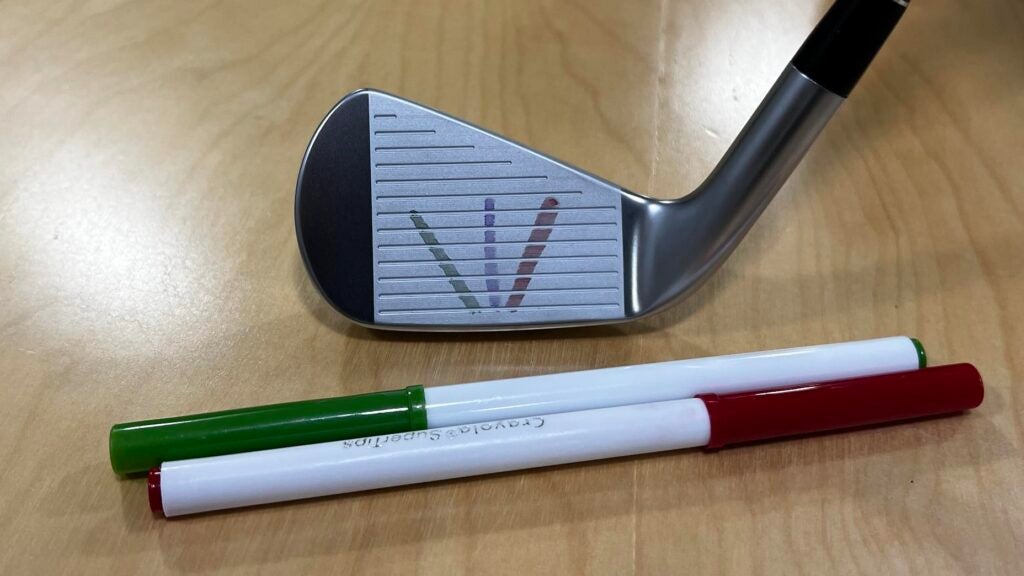When it comes to club fitting, there are many small details that add up to gaining accuracy and distance, and one of the easiest ways to dial in your gear is to make sure you have the right lie angles with your irons and wedges.
But before we get to how to identify a possible issue with your golf club lie angles — let’s explain exactly what it is first.
What is lie angle?
Lie angle is the measured angle formed by the hosel/shaft relative to the ground when the head is at rest or when the grooves are parallel with the ground. The higher the lie angle value, the more “upright” the club is. The lower the lie angle, the more “flat” a club is.
If the lie angle of your clubs isn’t adjusted for your natural impact position, it will limit your ability to hit solid shots and create an unwanted bias in your ball flight.
If your irons are too flat for your swing, the face is naturally going to approach the ball open to the target line and you will either miss shots to the right, or you will notice your ball fading more than desired. Conversely, if your clubs are too upright, the club face will point more left and result in a pull, or shots that overdraw.
How to check your lie angles
Beyond the obvious ball flight issues that might be identified just by hitting shots, one of the easiest ways to make sure your lie angles are adjusted properly involves using a dry-erase marker (or any washable marker) and a few range balls.
The process
Using the marker, draw a 1-inch line on a golf ball and set it down pointing at the target line.
Once you’ve hit a shot and observed ball flight, take a look at the face or your iron to see where the line is pointing. If the ball traveled as intended and the line is 90 degrees to the grooves or just a hair in either direction, you’re golden.
If the line is pointed toward the toe, it means your lie angle is too upright and needs to be adjusted flatter. If the line is toward the heel, it means the clubs are too flat and need to be adjusted upright.
(Note: The marker line is NOT relative to the number of degrees the clubs have to be bent because it also represents the face angle at impact, which will exaggerate the marking. This is why it’s important to have a clubfitter do a final check before any adjustments are made — preferably with a launch monitor.)
You can repeat this process for all of your irons and wedges and use the marks as a guideline for adjusting your entire set. Just make sure to chart the information and ball flight before seeing a fitter who can then individually adjust each club to fit your swing.
For many golfers, the ideal lie angle through their iron sets isn’t a linear progression, which is why the fitting process is a crucial one to making sure every club in your set is best matched to you.
Want to overhaul your bag? Find a fitting location near you at True Spec Golf.
